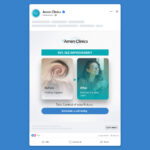Contents:
- Introduction to Content Marketing for Internet Marketers
- Why Trust is Essential in Content Marketing
- Top Content Marketing Tools for Internet Marketers
- How to Choose the Right Tool for Your Needs
- The Role of Data in Content Marketing
- Creating Actionable Content for Your Audience
- Questions to Ask Before Investing in a Tool
- Conclusion and Next Steps
Introduction to Content Marketing for Internet Marketers
Ten years ago, the digital landscape was a mere shadow of what it is today. Fast forward to now, and the internet is buzzing with content, each piece vying for the attention of its target audience. But here’s the catch: not all content is created equal.
Have you ever wondered why some content pieces go viral while others barely get a glance? The answer lies in understanding the audience and crafting content that resonates with them. For internet marketers, this is the golden ticket.
Why? Because in the vast ocean of the internet, content is the beacon that guides users to your brand. It’s the voice, the personality, and the value proposition all rolled into one. But it’s not just about churning out articles, videos, or infographics. It’s about creating content that speaks directly to the needs, desires, and challenges of internet marketers.
Imagine this: You’re an internet marketer, and you stumble upon an article that not only addresses your current challenges but also offers actionable solutions, backed by data. It’s like finding a gold mine, right? That’s the power of targeted content marketing.
Now, you might be thinking, “That sounds great, but how do I achieve it?” The journey begins with understanding the tools of the trade, the platforms that can elevate your content, and the strategies that can amplify its reach. And that’s precisely what we’ll dive into in this guide.
Why Trust is Essential in Content Marketing
Remember the days when a handshake was enough to seal a deal? In the digital realm, we don’t have the luxury of face-to-face interactions, but the principle remains the same. Trust is the foundation of any successful relationship, and in the world of content marketing, it’s the invisible handshake that binds brands to their audience.
So, why is trust such a big deal? Let’s break it down.
1. Trust Translates to Credibility
In an age where misinformation is just a click away, being a credible source is like having a gold star on your report card. When readers trust your content, they see you as an authority in your field. And guess what? They’re more likely to come back for more, turning casual readers into loyal followers.
2. Trust Boosts Conversion Rates
Think about it. Would you buy from a brand you don’t trust? Probably not. Trust is the bridge that leads potential customers from mere awareness to making a purchase. When your content is genuine, transparent, and valuable, it creates a sense of security, nudging readers closer to that all-important “buy now” button.
3. Trust Enhances Brand Loyalty
In the bustling marketplace of the internet, trust is the glue that keeps customers sticking around. It’s not just about making a sale; it’s about building a community of loyal brand advocates. And how do you achieve this? By consistently delivering trustworthy content that resonates with your audience’s needs and values.
4. Trust Fosters Word-of-Mouth Marketing
Let’s face it, we all love a good recommendation. When readers trust your content, they’re more likely to share it with their network. This organic word-of-mouth marketing is invaluable, amplifying your reach and introducing your brand to a wider audience.
To sum it up, in the world of content marketing, trust isn’t just a nice-to-have; it’s a must-have. It’s the cornerstone of building meaningful relationships with your audience, driving conversions, and establishing your brand as a leader in the industry.
Top Content Marketing Tools for Internet Marketers
Ever wondered what’s in the toolkit of a successful internet marketer? Just like a master chef has their favorite set of knives, internet marketers have their go-to content marketing tools. These tools aren’t just fancy add-ons; they’re essential ingredients in the recipe for online success.
Ready to peek inside the toolkit? Let’s dive in.
1. HubSpot: The All-in-One Powerhouse
HubSpot isn’t just a tool; it’s a complete marketing ecosystem. From crafting compelling content to optimizing it for search engines and ensuring it reaches the right eyes, HubSpot has got you covered. And the best part? Most of its features come with a free trial.
- Best used for Centralizing your content marketing efforts.
- Pricing: Starts at $45/month.
2. WordPress: The Digital Publisher’s Dream
When it comes to publishing content, WordPress is the reigning champion. Whether you’re looking to start a blog or launch a full-fledged website, WordPress offers a user-friendly platform packed with features.
- Best used for Crafting and publishing content.
- Pricing: Plans begin at $4/month.
3. Trello: Organize, Plan, and Execute
Imagine having a digital board where you can pin all your ideas, tasks, and projects. That’s Trello for you. With its intuitive card-based system, planning and collaboration become a breeze.
- Best used for Streamlining tasks and project management.
- Pricing: Free version is available, with premium plans starting at $5/month.
4. Airtable: Your Digital Spreadsheet on Steroids
If you’re dealing with heaps of data, Airtable is your best friend. It’s not just a spreadsheet; it’s a dynamic platform where you can organize, filter, and collaborate on data like never before.
- Best used for Managing content calendars and databases.
- Pricing: Starts with a free plan.
5. Google Analytics: The Pulse of Your Online Presence
Want to know how your content is performing? Google Analytics provides a deep dive into your audience’s behavior, giving you insights to refine your strategy.
- Best used for: Tracking website metrics and understanding your audience.
- Pricing: Free.
And that’s just the tip of the iceberg. The digital world is brimming with tools designed to supercharge your content marketing efforts. The key is to find the ones that align with your goals and integrate seamlessly into your workflow.
How to Choose the Right Tool for Your Needs
Ever stood in front of a toolbox, overwhelmed by the choices? Picking the right tool for a job is crucial, and in the world of content marketing, it’s no different. With a plethora of tools at your fingertips, how do you ensure you’re making the right choice for your unique needs?
Let’s break it down, step by step.
Define Your Goals: The North Star
Before diving into the sea of tools, take a moment to reflect. What are you aiming to achieve with your content marketing efforts? Whether it’s boosting website traffic, enhancing user engagement, or driving conversions, having a clear goal will guide your tool selection.
- Pro Tip: Write down your top three objectives. This clarity will be invaluable.
Budget Considerations: Quality vs. Affordability
While we all love premium features, it’s essential to strike a balance between quality and cost. Determine your budget and explore tools that offer the best value within that range.
- Remember: Sometimes, a free or budget-friendly tool can deliver results just as effectively as its pricier counterpart.
Integration Capabilities: The Seamless Fit
Consider the other platforms and tools you’re already using. The last thing you want is a new tool that clashes with your existing ecosystem. Opt for tools that offer smooth integrations, ensuring a harmonious workflow.
- Ask Yourself: Can this tool easily sync with my current systems?
User Experience: Ease Over Complexity
A tool might be packed with features, but if it’s too complex to navigate, it defeats the purpose. Prioritize tools that offer a user-friendly interface, ensuring you spend more time creating content and less time wrestling with the platform.
- Golden Rule: If you can’t figure out the basics within the first 15 minutes, it might not be the right fit.
Scalability: Growing With You
Your content marketing needs today might differ from those a year down the line. Choose tools that can scale with your growth, ensuring you don’t outgrow them too quickly.
- Think Ahead: Where do you see your content marketing efforts in the next two years? Will this tool still be relevant?
Community & Support: You’re Not Alone
Lastly, consider the support and community around a tool. A vibrant community can offer tips, tricks, and solutions, while robust customer support ensures you’re never left in the dark.
- Insider Tip: Check out online reviews and forums. They’re goldmines of user experiences and insights.
In conclusion, choosing the right content marketing tool isn’t just about flashy features or big brand names. It’s about finding a tool that aligns with your goals, fits seamlessly into your workflow, and offers value for money.
The Role of Data in Content Marketing
Ever heard the saying, “Numbers don’t lie?” In the realm of content marketing, this couldn’t be truer. While creativity and intuition play their parts, it’s the cold, hard data that often holds the keys to success. But why is data such a game-changer, and how can you harness its power?
Let’s dive deep into the world of numbers and narratives.
1. Data Validates Intuition: The Proof in the Pudding
You might have a gut feeling about a content piece or a marketing strategy, but without data to back it up, it’s just a hunch. Data offers tangible evidence, validating your choices and giving you the confidence to move forward.
- Quick Thought: Ever felt the satisfaction of seeing your instincts mirrored in data? That’s the magic of validation.
2. Data Helps Identify Trends: Riding the Wave
The digital landscape is ever-evolving. What’s trending today might be old news tomorrow. By analyzing data, you can spot emerging trends, ensuring your content is always relevant and timely.
- Golden Nugget: Stay ahead of the curve by regularly reviewing data insights. Be the trendsetter, not the follower.
3. Data Enhances Personalization: Speak Their Language
In today’s age of information overload, generic content just doesn’t cut it. Data allows you to understand your audience’s preferences, pain points, and behaviors, enabling you to craft personalized content that resonates.
- Pro Tip: Segment your audience based on data insights. Tailored content often leads to higher engagement rates.
4. Data Drives Continuous Improvement: The Cycle of Growth
Content marketing isn’t a one-and-done deal. It’s a continuous process of creating, analyzing, and refining. By studying data, you can identify what’s working, what’s not, and where there’s room for improvement.
- Remember: Every data point is a lesson. Embrace the feedback loop.
5. Data Fuels ROI: Show Me the Money!
At the end of the day, content marketing is an investment. And like any investment, you want returns. Data helps track performance metrics, from click-through rates to conversion rates, ensuring you get the best bang for your buck.
- Think About It: Would you continue investing in a strategy without knowing its returns? Data offers clarity and direction.
Creating Actionable Content for Your Audience
Ever read a piece of content and thought, “That’s great, but now what?” In the bustling world of content marketing, it’s not enough to just inform; you need to inspire action. But how do you craft content that doesn’t just end with a full stop but prompts a real-world response?
Let’s unravel the art of actionable content.
Understand Their Pain Points: The Heart of the Matter
Before you can offer a solution, you need to understand the problem. Dive deep into your audience’s challenges, fears, and aspirations. When your content addresses these pain points head-on, it becomes a catalyst for action.
- Quick Insight: Think of your content as a bridge, connecting your audience’s challenges to solutions.
Offer Clear Solutions: No Beating Around the Bush
While it’s essential to highlight problems, your content should be solution-centric. Offer clear, concise, and practical solutions that readers can implement immediately.
- Golden Rule: Every piece of content should answer the reader’s implicit question, “How can this help me?”
Use Strong Call-to-Actions (CTAs): The Nudge They Need
A well-crafted CTA is like a signpost, guiding readers on what to do next. Whether it’s signing up for a newsletter, downloading a resource, or making a purchase, your CTA should be compelling and clear.
- Pro Tip: Experiment with different CTAs to see what resonates most with your audience. Data is your friend here.
Incorporate Real-Life Examples: Stories that Inspire
There’s power in storytelling. By showcasing real-life examples and success stories, you not only validate your solutions but also inspire readers to take similar actions.
- Remember: People relate to people. Personal stories often have a more profound impact than mere facts.
Make It Interactive: Engage, Don’t Just Inform
Interactive content, be it quizzes, polls, or calculators, encourages active participation. It transforms passive readers into engaged participants, increasing the likelihood of them taking action.
- Think About It: When was the last time you resisted a fun, interactive quiz on your favorite topic?
Questions to Ask Before Investing in a Tool
Ever stood in a store, overwhelmed by choices, wishing you had a checklist to guide your purchase? In the digital realm, with a myriad of tools vying for your attention, making an informed decision can feel like navigating a maze. But what if you had a set of questions to steer your choice?
Let’s dive into the essential questions every savvy marketer should ask.
1. Is It User-Friendly? The First Date Test
Think of trying out a new tool as a first date. Is it approachable? Intuitive? If you’re struggling to understand its basic features, it might not be the right match.
- Quick Thought: A tool should simplify your life, not complicate it. If it feels like learning a new language, reconsider.
2. Does It Offer Integration Capabilities? The Compatibility Check
Your new tool should play well with others. Does it integrate seamlessly with your existing platforms and tools? If not, you might be setting yourself up for a digital headache.
- Golden Nugget: Integration isn’t just about functionality; it’s about creating a harmonious digital ecosystem.
3. What’s the ROI? The Value Proposition
Every tool is an investment. Beyond the price tag, consider the value it brings. Will it save time? Boost productivity? Enhance results? Ensure the returns justify the investment.
- Pro Tip: Sometimes, the most expensive tool isn’t the most valuable. Look beyond the price.
4. Are There Any Hidden Costs? The Fine Print
Some tools come with additional costs, be it for premium features, updates, or support. Dive deep into the pricing structure to avoid any unpleasant surprises.
- Remember: Transparency is key. If a tool isn’t upfront about its costs, tread carefully.
5. How Does It Compare to Competitors? The Market Scan
Before making a decision, scan the market. Are there alternatives that offer better features, pricing, or support? A little research can go a long way.
- Think About It: Would you buy the first car you test drive without checking out other options?
6. What’s the Learning Curve? The Time Investment
Every new tool requires time to learn. But how steep is the learning curve? If it demands extensive training or resources, weigh the time investment against the potential benefits.
- Insider Tip: Check out online tutorials or demos. They offer a sneak peek into the user experience.
In essence, choosing the right tool is a blend of research, intuition, and foresight. It’s about finding that perfect balance between functionality, cost, and value.
So, armed with these questions, are you ready to make an informed choice and invest in tools that truly amplify your content marketing efforts? The digital toolbox awaits your discerning eye.
Conclusion and Next Steps
Ever reached the end of a thrilling book, only to be left craving for the next chapter? That’s the feeling we aim for in content marketing. As we wrap up this guide, it’s not the end of the journey but the beginning of an exciting adventure.
So, where do we go from here? Let’s chart the path forward.
1. Reflect and Reassess: The Mirror Moment
Take a moment to reflect on everything we’ve covered. From understanding the importance of trust in content marketing to diving deep into the world of tools and data, it’s been a whirlwind. But knowledge without action is like a car without fuel.
- Quick Thought: What were your key takeaways? Jot them down. They’ll be your roadmap.
2. Experiment and Explore: The Playground Approach
The digital landscape is vast and ever-evolving. Don’t be afraid to experiment with new tools, strategies, or content formats. Sometimes, the most unexpected approaches yield the best results.
- Golden Rule: Stay curious. Every experiment, success or failure, is a learning opportunity.
3. Engage and Connect: The Community Spirit
Remember, you’re not alone in this journey. Connect with fellow marketers, join forums, attend webinars, and participate in workshops. Sharing experiences and insights can offer fresh perspectives.
- Pro Tip: Networking isn’t just about business; it’s about building a community of like-minded individuals.
4. Stay Updated: The Continuous Learning Curve
The world of content marketing is dynamic. What’s relevant today might be outdated tomorrow. Dedicate time to stay updated with the latest trends, tools, and techniques.
- Remember: Knowledge is power. Equip yourself with the latest insights to stay ahead of the curve.
In conclusion, content marketing is both an art and a science. It’s about crafting compelling narratives, backed by data, and delivered through the right channels. But most importantly, it’s about continuous growth, learning, and adaptation.
Sources:
- How Content Marketing Builds Trust – Marketing Insider Group Retrieved from https://marketinginsidergroup.com/content-marketing/content-marketing-builds-trust/
- How To Use Content Marketing To Build Brand Trust – Forbes Retrieved from https://www.forbes.com/sites/forbesagencycouncil/2021/03/10/how-to-use-content-marketing-to-build-brand-trust/?sh=24acfc9625e3
- The Importance of Building Trust in Digital Marketing – LinkedIn Retrieved from https://www.linkedin.com/pulse/importance-building-trust-digital-marketing-digi-venders?trk=public_post
- 4 Ways Content Can Fuel High-Trust Relationships – Influence & Co. Retrieved from https://blog.influenceandco.com/dont-underestimate-the-value-of-trust
- Building Trust via Brand Identity & Content Marketing Retrieved from https://www.metricmarketing.com/blog/the-importance-of-brand-identity-content-marketing/






